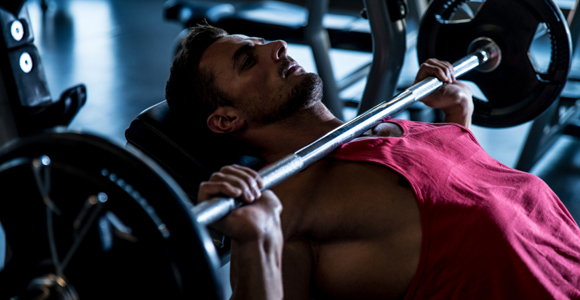Stretching is an important aspect of pre-workout activity, but intensive stretching has been scientifically proven to negatively impact lower-body workout performance. In April of 2013, The Journal of Strength and Conditioning Research revealed that extensive passive warm-up exercise decreases a moderately trained male's ability to execute rigorous lower-body strength training activities. This particular study focused on young men between the ages of 18 and 24, and although results varied based on individual strength, researchers concluded that intensive stretching should be avoided for the sake of maximizing weightlifting performance.
Intensive Stretching
Intensive stretching is a type of warm-up activity that requires extensive time spent loosening the tendons and ligaments in each major joint of the body. This type of stretching is commonly associated with fast-paced athletic movements, such as those of a basketball player during competition, like sprinting and jumping. Yoga is a solid example of a type of exercise that requires execution of "intensive stretches." Extensive stretching of tendons and ligaments can greatly reduce the chance of injury. It also increases flexibility. This type of warm-up exercise is best utilized when preparing for prolonged bouts of cardiovascular exercise, but it is not necessary for weightlifting.
Over-Stretching vs. Intensive Stretching
Intensive stretching should not be confused with "over-stretching." The differences are subtle, yet they are important to recognize. Over-stretching is simply defined as stretching to the point where severe pain may be induced. Intensive stretching refers to partaking in warm-up exercises that completely loosen the ligaments and tendons in the joints, such as those that you might perform during a yoga session at the gym. While pain may occur during intensive stretching due to the difficulty of exercises performed, it's important realize that warming up shouldn't result in pain to the point where you're no longer able to exercise.
Weightlifting Warm-Ups
Don't underestimate the importance of warming up, even if you decide not to stretch. Recommendations for weightlifting warm-ups include brisk walking, high knees and jogging in place. It's important to increase your heart rate before performing vigorous exercise for the sake of increasing blood flow, which allows your muscles to work more efficiently. Warming up is also important because an accelerated heart rate signals to your body that oxygen and vital nutrients must be supplied to working muscles.
Acute Effect of Passive Static Stretching
The Journal of Strength and Conditioning Research refers to "intensive stretching" as "passive static stretching," or PSS, in the study it published regarding the impact of this particular type of warm-up activity on lower-body weightlifting. The study ultimately determined that males who performed intensive stretches before performing a maximum squat were able to lift less weight than those who used resistance training equipment, such as a stationary leg extension machine, prior to being tested. Although certain physiological factors influenced the outcome of this study, like inherent strength, the journal recommends using resistance training equipment as opposed to intensive stretching techniques in order to maximize workout performance.
Establishing Realistic Fitness Goals
You shouldn't completely neglect the need to stretch in order to maximize your ability to lift as much weight as your body naturally can. Stretching remains a vital segment of most exercise activity, but how much and how often you should stretch is a point of ongoing scientific research. It's important to establish realistic fitness goals when working out, regardless of if you're performing cardio exercise or lifting weights. What you do before each workout will impact your overall performance. Making goals that reflect your pre-workout regimen will better enable you to achieve a higher level of fitness.
John Shea is a team sports fanatic and fitness aficionado. His work has been published across a wide platform of online audiences in the realm of health and fitness. His passion for fitness is exemplified in his writing, as he aims to help readers improve their overall well-being.




